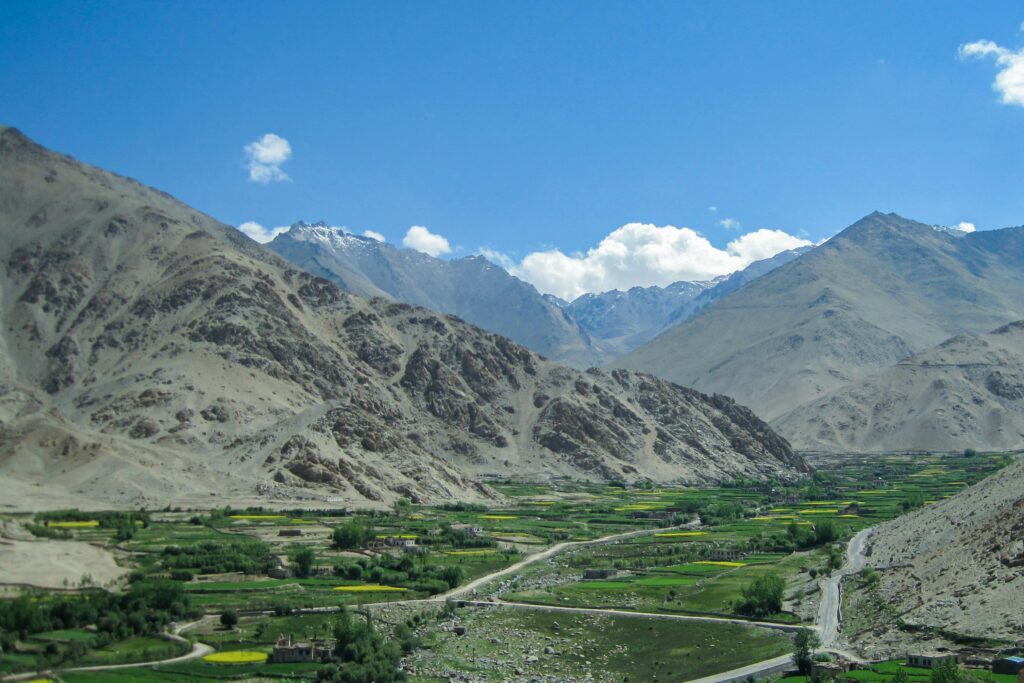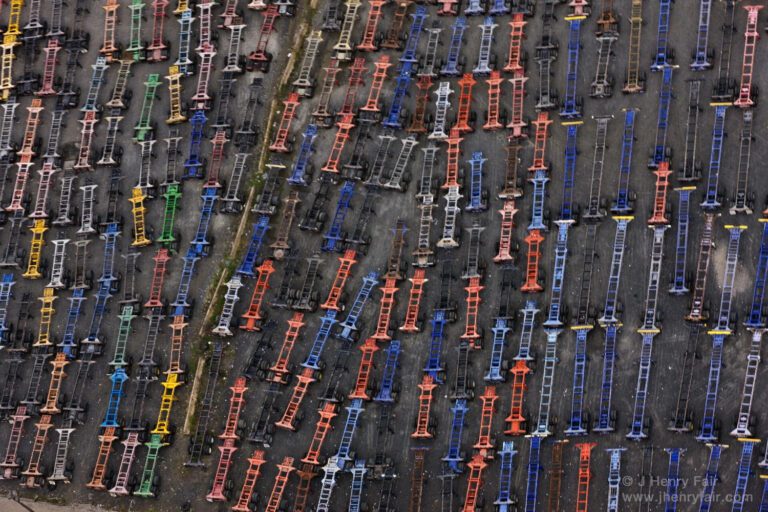The Hindukush Himalayan region, an area that encompasses the entirety of Bhutan and Nepal, along with stretches of India, China, Pakistan, and other nations, is often referred to as the “Third Pole” because it holds the largest reserve of snow and ice outside the polar regions. This region is crucial to the livelihoods and economies of billions of people, as it is the source of ten of the largest rivers in Asia. However, climate change is threatening this lifeline, with glaciers retreating, weather patterns becoming increasingly unpredictable, and scientists declaring in a recent report that the Hindukush Bio-Sphere is on a brink of collapse.
In this critical situation, Ladakh’s proactive approach towards climate change—becomes a source of inspiration. This high-altitude desert, despite its stark landscape, is a place where the principles of ‘dharma’—a concept encompassing duty, righteousness, and moral order—take precedence over material gain. The people of Ladakh demonstrate an intrinsic understanding that true wealth lies in the health of their environment and the continuation of their cultural heritage, not just in immediate financial benefits.
Over the years, Ladakh’s response to climate change has been multi-faceted: from innovative water conservation measures, to investment in renewable energy, protection of biodiversity, promotion of sustainable agriculture, focus on climate education, and integration of sustainability into governance. These initiatives have fostered a resilient community, capable of adapting traditional wisdom to contemporary challenges. Such strategies are underpinned by an ethos that values sacrifice and stewardship, viewing the preservation of the ecosystem as a sacred duty rather than an economic trade-off.
By prioritizing their dharma over short-term economic gain, they have maintained the purity of their rivers, the sanctity of their mountains, and the vibrancy of their culture.
Their commitment is further exemplified in the work of the pioneering educational institution, SECMOL (Students’ Educational and Cultural Movement of Ladakh). This movement demonstrate the remarkable impact of engaging local communities in sustainable practices. SECMOL, particularly, has been instrumental in empowering young Ladakhis, providing education that harmonizes with the region’s environmental and cultural ethos. This model of local involvement, alongside water conservation through ingenious methods like ‘ice stupas,’ solar passive mud buildings, renewable energy adoption with widespread use of solar power for water heaters, responsible tourism, and traditional compost toilets, encapsulates a comprehensive approach to climate resilience. The Hindukush Himalayan region stands to gain from emulating these community-based strategies, fostering a sense of ownership among residents to preserve their unique environment.

Over above all, a poignant extreme embodiment of their commitment is the ongoing ‘Climate Fast’ undertaken by people of Ladakh, who are braving the chilling Himalayan temperatures to spotlight the urgency of climate action. Led by global innovator, educator and engineer Sonam Wangchuk- their demonstration is a profound expression of dharma toward the Earth and future generations. It underscores a collective vision for the future—one where the integrity of our ecosystems is regarded as sacred and indispensable.
This steadfast dedication comes with its share of sacrifices. Ladakhis have forgone certain development opportunities that conflict with their ecological and cultural values. Instead, through their demonstration they are seeking to carve out a development path that is sustainable, one that respects the fragile balance of their high-altitude ecosystem.
In Ladakh, this is not a new-fangled trend but a time-honored tradition. By prioritizing their dharma over short-term economic gain, they have maintained the purity of their rivers, the sanctity of their mountains, and the vibrancy of their culture.
The fast in the freezing cold is a dramatic assertion that the people of Ladakh are ready to bear hardships for the greater good. It is a clarion call for humanity to adopt a similar ethos of selflessness and sacrifice by choosing to live simply. Such acts of conviction and courage galvanize communities and inspire policymakers to reflect on the long-term implications of their decisions.
The message emanating from Ladakh’s austere landscapes is clear: the well-being of our environment is non-negotiable. It carries a stark warning: while economic development can be postponed, the irreversible loss of glaciers—a critical source of water and life—cannot. Hence, it is not just a call to action but a plea for introspection about the kind of progress we pursue and the legacy we wish to leave for future generations.
In the face of climate change, every region, every community, and every individual has a role to play, a dharma to fulfil. As the Hindukush Himalayas look toward Ladakh, they see not just strategies and initiatives but a spirit of unwavering commitment to the planet—a spirit that must be kindled across the globe.
This spirit promises a future where economic systems are redesigned to serve not only humanity but all life forms. It envisions a world where development is measured not by the yardstick of profit but by the wellbeing of the environment and the resilience of communities.
In conclusion, Ladakh’s ‘Climate Fast’ and the teachings it embodies are seminal to charting a course for the Hindukush Himalayas and beyond. The dharma of environmental stewardship, as embraced by the Ladakhis, is a testament to the profound wisdom that when we protect our earth, we protect ourselves. In the stillness of Ladakh’s cold, the warmth of this understanding beckons us to a future where economy and ecology walk hand in hand, guided by the immutable principles of dharma.
This article was originally published on Kuensel, the national newspaper of the Kingdom of Bhutan. It is reprinted here with permission.








